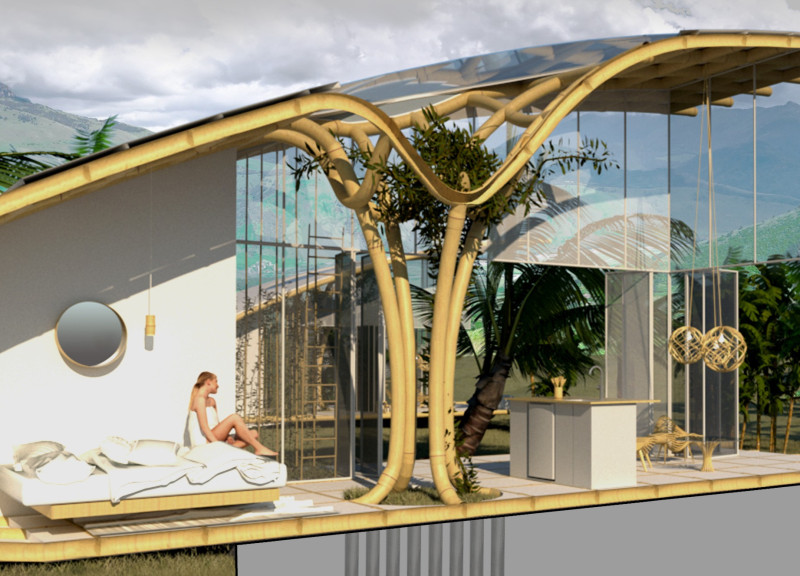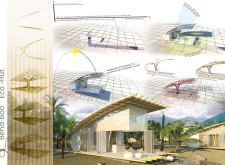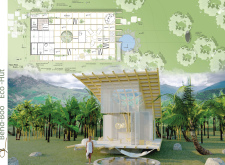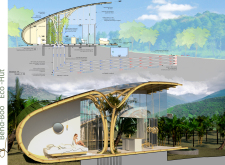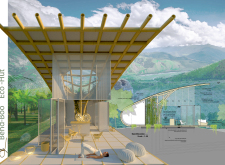5 key facts about this project
The Bend-Boo Eco-Hut is located in Cambodia and emphasizes a focus on sustainability while connecting to the surrounding environment. The design concept combines practical living with ecological awareness. By incorporating various systems for comfort and efficiency, the hut creates a space that enhances the relationship between its occupants and nature.
Natural Ventilation and Cooling Systems
A natural ventilation system uses vents to introduce cool, dry air into the living space. An underground metal pipe, about 4 inches in diameter, cools the air while reducing humidity. This pipe is designed to capture excess moisture and direct it towards a cesspit, demonstrating effective waste management and improving indoor air quality.
Solar Energy Integration
The solar panels on the roof are positioned at an angle of 17.5 degrees, which helps maximize sunlight exposure year-round. This layout enhances energy efficiency and highlights the importance of renewable resources, reflecting a broader effort to reduce reliance on non-renewable energy.
Spatial Design and Functionality
The hut's floor plan emphasizes accessibility and practicality. An entrance ramp with an 8% incline leads into the space, accompanied by double doors framed with mosquito netting to reduce insect intrusion. Inside, a carefully designed kitchen unit and designated storage areas meet the daily needs of residents, while a toilet ensures convenience. The use of a bamboo framework supports climbing plants, adding beauty and helping with passive temperature regulation.
Outdoor Living Spaces
The design features areas for relaxation, including a hanging net hammock and a porch that invite residents to enjoy the outdoors. These spaces act as connections between the interior and the environment. Climbing plants surrounding the hut enhance the visual appeal, blending the structure with the natural setting.
The Bend-Boo Eco-Hut showcases thoughtful design details. The bathroom features a glass divider that keeps privacy while allowing light to enter, creating a sense of openness. The overall approach combines sustainability with practical living, supporting a lifestyle that respects and honors the natural world.


